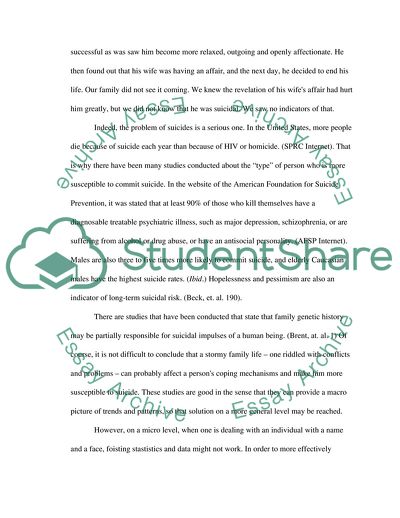Cite this document
(The Burden Carried by the Family Members of Suicide Victims Essay Example | Topics and Well Written Essays - 1250 words, n.d.)
The Burden Carried by the Family Members of Suicide Victims Essay Example | Topics and Well Written Essays - 1250 words. https://studentshare.org/psychology/1704379-suicide-before-and-after
The Burden Carried by the Family Members of Suicide Victims Essay Example | Topics and Well Written Essays - 1250 words. https://studentshare.org/psychology/1704379-suicide-before-and-after
(The Burden Carried by the Family Members of Suicide Victims Essay Example | Topics and Well Written Essays - 1250 Words)
The Burden Carried by the Family Members of Suicide Victims Essay Example | Topics and Well Written Essays - 1250 Words. https://studentshare.org/psychology/1704379-suicide-before-and-after.
The Burden Carried by the Family Members of Suicide Victims Essay Example | Topics and Well Written Essays - 1250 Words. https://studentshare.org/psychology/1704379-suicide-before-and-after.
“The Burden Carried by the Family Members of Suicide Victims Essay Example | Topics and Well Written Essays - 1250 Words”. https://studentshare.org/psychology/1704379-suicide-before-and-after.


